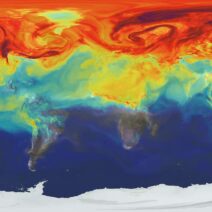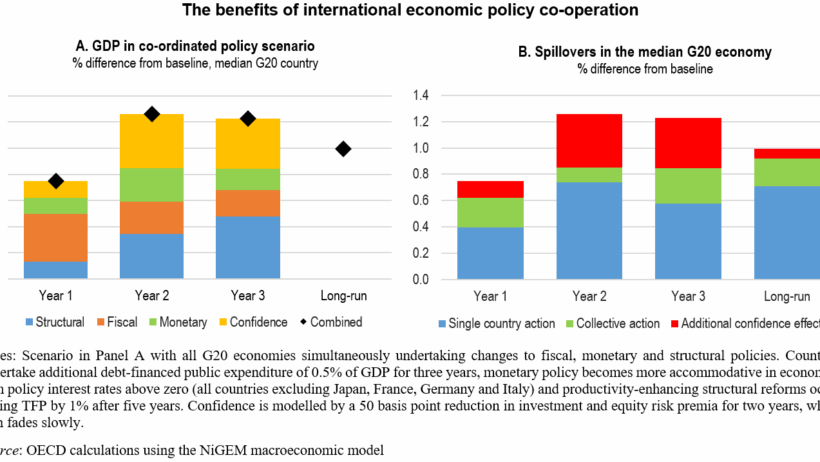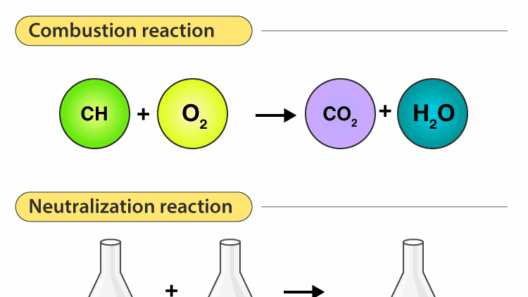The COVID-19 pandemic has created an unprecedented global phenomenon, reshaping various sectors, including the environment. While one could argue that the temporary decline in human activity led to a decrease in greenhouse gas emissions, it is vital to dive deeper into the intricacies of this paradox. How does a global health crisis engender consequences that are both beneficial and deleterious to our planet’s climate? This intricate web of events poses a challenging question: Can humanity capitalize on this moment to forge a sustainable path forward, or will we merely revert to old habits as the world reopens?
The onset of the pandemic initiated a sudden, substantial reduction in industrial production. Lockdowns across continents saw factories closing their doors, cars removed from roads, and planes grounded. Unavoidably, emissions plummeted. The Global Carbon Project reported a decrease in carbon dioxide emissions by approximately 7% in 2020. Such figures beg the question: What would a sustained reduction in these emissions mean for global warming?
In the aftermath of stringent lockdown measures, studies indicated undeniable improvements in air quality. Major urban centers experienced a notable decline in particulate matters and nitrogen dioxide levels, which were linked to vehicular and industrial activities. The once-smoggy skies of cities like Los Angeles and New Delhi transformed into clearer vistas. This phenomenon introduced a fleeting glimpse of what our cities could look like if drastic changes were to be made in our approach to transportation and energy consumption.
However, this oasis of purity was short-lived. As economies began to reopen, the drive for recovery often prioritized instant economic rejuvenation over environmental concerns. Industries scrambled to regain lost ground, leading to a rapid resurgence in emissions. Indeed, indicators such as the increase in coal consumption in various regions signify that, without systemic change, we may be perpetuating a cycle of temporally-induced phenomenon followed by rapid regress.
Moreover, the pandemic exposed the fragility of our existing systems and reinforced the urgency of addressing climate change. Governments around the world displayed unprecedented agility in implementing policies to help mitigate the pandemic’s impacts. This adaptability raises a critical challenge: Can society harness this newfound flexibility to weave sustainable practices into the fabric of recovery plans, rather than succumbing to short-term solutions?
Additionally, the pandemic led to disruptions in supply chains and highlighted the vulnerabilities of global trade networks. As nations faced shortages of critical supplies, a compelling narrative around self-sufficiency and localization emerged. Could these shifts lead to a renaissance in local economies and a decreased carbon footprint associated with transport? The challenge remains to ensure that as we bolster local production, we also remain committed to sustainable practices to mitigate global warming implications.
Parallel to these environmental discussions, the pandemic catalyzed a transformation in labor dynamics. Remote work became the norm, reducing daily commutes and cutting down on emissions. This presents a curious opportunity to rethink traditional workplace models. Could a long-term embrace of remote work contribute to a sustainable reduction in urban congestion and resource consumption? While telecommuting may not be universally applicable, hybrid models could curtail emissions from transport considerably.
The pandemic further amplified discussions around renewable energy sources. With economic recovery on the horizon, many economists argue for investing in clean technology as a cornerstone of revival strategies. This presents a formidable challenge and opportunity—how can we ensure that renewable energy innovations are prioritized over fossil fuels in post-pandemic infrastructure investments? The quest for green technology could potentially stimulate job creation while concurrently safeguarding our environmental future.
Nonetheless, the pandemic also sowed seeds of social and economic inequality that cannot be disregarded in discussions of climate action. Marginalized communities often bear the brunt of both environmental degradation and public health crises. If environmental policies do not encompass equitable frameworks, the ambition of fostering a sustainable future may remain elusive. Thus arises another pivotal question: How can we ensure that climate action is inclusive while addressing disparities exacerbated by the pandemic?
As the world grapples with the multifaceted repercussions of COVID-19, it is crucial to assess the resilience of our ecological systems. Scientific research has persistently underscored the resilience of nature and its remarkable ability to recover when given the chance. This insight leads to a hopeful suggestion: Could the pandemic inspire a broader shift in consciousness towards sustainable living and collective environmental stewardship?
To harness the lessons of this tumultuous period, it is imperative to forge not merely reactive strategies, but proactive models for future resilience. This involves integrating carbon-neutral policies into recovery plans, promoting community-driven initiatives for environmental sustainability, and leveraging scientific innovation to address climate challenges. Moreover, every individual has a role to play; cultivating a culture of sustainability needs grassroots efforts alongside governmental policies.
The crux of this discussion encapsulates the delicate balance of progress and preservation. As societies navigate the complexities of recovery, a conscious reprioritization towards ecological stabilization can redefine our trajectory. Will humanity seize this moment to reimagine boundaries and push for a more sustainable paradigm? The post-pandemic landscape remains a canvas yet to be painted. The path forward invites contemplation and action, as the choice lay before us all: to emerge stronger and more committed to the environment, or to return to the comfortable embrace of the status quo.







